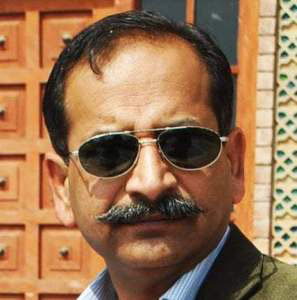 ALI SUKHANVER --
ALI SUKHANVER --
Very unfortunate that we in Pakistan had to witness a very painful rather heart-breaking incident just a few days back; the brutal murder of a factory manager belonging to Sri Lanka. The incident took place in Sialkot; an industrial city of Pakistan. Though reports say that it was an act of some individuals and the whole nation including the religious strata of society strongly condemned it but this incident certainly damaged the gradually strengthening soft image of the country. A few days prior to this incident, a model girl went to visit the Gurdwara Darbar Sahib in Kartarpur and after having there a photo-shoot, uploaded her photo-shoot pictures on social-media. She was bareheaded during the photo-shoot and her dress up was not suitable for going to such a sacred place. The whole nation stood united against the nonsense attitude of that model girl because her stupid rather disgusting act defamed the whole of Pakistani society where majority of people is very caring and considerate for the people belonging to other religions. However seeing public reaction the model girl admitted her mistake and posted an apology on her Instagram page after deleting the If objectionable photos. It seems that the Sikh community has accepted her apology but some Indian newspapers and TV channels, run by the Hindu extremists, seem unwilling to accept her apology. These channels are trying their best to exploit this incident by raising hue and cry against Pakistan and against the Sikh leaders who say that Pakistan is their second home. Now after the Sialkot tragedy they are joining these two incidents and using this collage for maligning Pakistan. Instead of wasting their energies on defaming Pakistan, if these newspapers and channels had raised their voices over human rights exploitation of the Dalits and so many other minorities in India, situation could have been far peaceful and far comfortable not only in India but also in the whole region.
As far as the Sialkot incident is concerned, such types of incidents take place so many times all over the world. The Aljazeera reported on 17th June this year that the military set a village Kin Ma in central Myanmar on fire after a clash with opponents, leaving at least two elderly people burned to death, according to several people who lived in the village. The blaze was large enough to be recorded by NASA’s satellite fire-tracking system. “The security forces set the fires after confronting opponents of the coup and that at least two people were killed,” said the villagers talking to media. In May 2018, the lynching of 10 Muslim travelers in retaliation over the murder and rape of a Buddhist Rakhine woman ignited a new wave of violence in Arakan state. Escalating incidents of violence included further rapes, murder, arson and torture and the main target were Rohingya women and children. This violence resulted in burning of entire villages and displacement of more than 100,000 people. Myanmar’s Rohingya community is considered one of the most persecuted communities in the world.
On 2nd September 2018, the Reuters reported killing of 10 Rohingya Muslim captives by Buddhist villagers and Myanmar troops. Brutally they all were dumped in a shallow grave while some of them were still alive. “One grave for 10 people,” said Soe Chay, 55, a retired soldier from Inn Din’s Rakhine Buddhist community who said he helped dig the pit and saw the killings. The soldiers shot each man two or three times, he said. “When they were being buried, some were still making noises. Others were already dead.”
In India situation regarding lynching and burning is more horrible. In 2015, the BBC reported the mob lynching of a 50-year-old man in Dadri area of northern India. His name was Akhlaq and he was a poor Muslim. That horrible night, rumors engulfed the whole locality that the family of Akhlaq had been storing and consuming beef at home. “It was around 10.30pm on Monday night and the nine-member Akhlaq family had been preparing to go to bed after dinner,” reported BBC. “Mohammad Akhlaq, a farm worker, was already asleep in a room next to his 22-year-old son, Danish, when a frenzied mob, wielding sticks, swords and cheap pistols burst into their home, accusing the family of having slaughtered a cow and consuming it.” His 75-year-old mother, Asghari said talking to media with tearful eyes, “They came from everywhere. Over the walls, through the gate...They just barged into the house, shouting that we had slaughtered a cow. I asked them how we can bring a cow into the house without anyone seeing. We are the only Muslim family in this neighbourhood.” But there was no one to listen to the old mother. Some of the family’s immediate Hindu neighbours tried to intervene, telling the mob to leave the family alone, but to no avail. She further said, “The mob bashed his head with a sewing machine lying nearby and dragged him and Danish out of the house. From that point the beating became even more brutal. Both Akhlaq and his son Danish were beaten with bricks, kicked and stabbed repeatedly. And then there was silence. In lynching case of Akhlaq, we see that a few Hindu neighbours played a very positive role and did all possible to save Akhlaq but a few individuals could never compete with a mob. Same thing happened there in Sialkot with the Sri Lankan factory manager. Some of the factory workers and particularly an assistant manager tried all their best to save the unlucky poor soul but could not do so. Those who tried to rescue him were the Muslims just the same way in Akhlaq’s case, the rescuers were the Hindus. On the basis of some individual’s non-sense behavior, we cannot blame and frame the whole society. By doing so, we do nothing but promote hatred and enmity.


